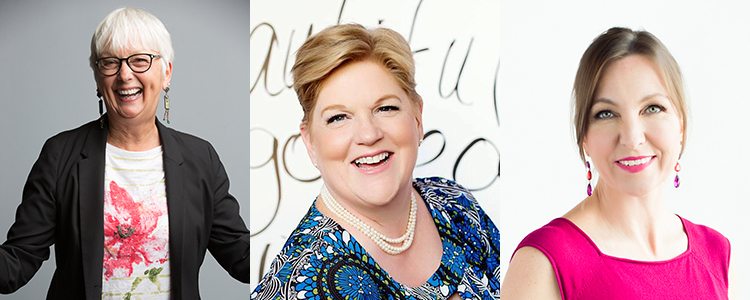Women-owned businesses contribute $1.4 trillion and employ 8.4 million people nationwide, but data shows that despite this success women-owned businesses only make 43 cents on the dollar compared to male counterparts, a 2017 economic report by the Office of Advocacy of the U.S. Small Business Administration stated.
Data shows that women-owned businesses have smaller sales and fewer employees than male-owned businesses. For every $1 a women-owned business makes, a male-owned business earns $2.30 in revenue.
Wendy Anderton, board member of the National Association of Women Business Owners-Phoenix Chapter, said women often hear about equity in pay which is 72 cents on the dollar, but for revenue in women-business ownership the difference is more dramatic.
“We need women business owners to understand that they are worth just as much as men,” said Anderton, the CEO of Global Ties Arizona. “When you have the ability to set your own pricing and viability, it shows that women business owners are huge contributors.”
Sources of financing, amount of capital and industry disparities are among the key issues restricting women entrepreneurs from pursuing bigger business opportunities, the report stated. The business practices of women entrepreneurs also tend to hinder their businesses because they are too nice and want to make others comfortable, said women business leaders.
Stephanie Sims, founder of Scottsdale-based financial management company Finance-Ability, said small businesses are the heart of the American economy. But the owners, women especially, do not see things from an investment perspective and they often have no clue how much their business is really worth.
“As women we want to make people comfortable, that we’re creating relationships and quite often that slows us down in those money conversations,” Sims said. “It’s hard for all entrepreneurs to talk about money, but it’s harder for women to get down to the nitty gritty and say, ‘Hey this is how much I’m worth and this is how much you should pay me.’”
Industries with the most women-owned businesses range from physician offices with high sales to restaurants that employ large numbers of workers, the report stated.
According to the report, 99 percent of women-owned businesses are small businesses. Yet women entrepreneurs start their businesses with less capital than male entrepreneurs. Women use personal forms of financing such as savings, personal credit cards and home equity because of limited money lending opportunities. But, male entrepreneurs are more likely to use traditional business loans from financial institutions.
Julie Cook, co-owner of Ideas Three Creative, a Mesa-based digital marketing company said her biggest challenge as a business owner was being taken seriously for money lending and access to capital.
“The biggest challenge as a women business owner is being able to get past a gatekeeper. I wanted to be able to get to the business decision maker,” Cook said.
Cook, president of the Phoenix NAWBO chapter, said is it critical for women entrepreneurs to understand money and where they can get it to help their business grow.
“The best thing a women business owner can do for herself is to truly understand her finances, create a business plan and really understand the business that she’s going into,” Cook said.
The reported showed that minority-owned business are important in helping the U.S. economy grow. During the recession, 2 million minority-owned businesses were created. Of those created, 47 percent were women-owned.
NAWBO board member Anderton said closing the revenue gap between women business owners and their male counterparts can be achieved by having an open mindset and increasing diversity in the workforce.
“Women have the ability to equalize that playing field and take away those barriers,” Anderton said. “We just need to demand that it gets done, and that demand comes from investors, shareholders and stockholders.”
Financial expert Sims said women entrepreneurs need access to information about the latest trends in their industries.
“Often times the solution is just to create a women’s group, but we need access to all the information and not just other women,” Sims said.
A lot of times women do not have access to the same types of conversations because they are not included in certain networks, Sims said.
“We’re not getting invited to a happy hour or golfing afternoon where everybody is talking about the latest trends in their industry,” she said. “It’s not just the opportunity for funding, it’s more the ability to have that information, that is harder for us.”
There are men who are interested in bringing women in, but there is no open line of communication for women to say what they really need, Sims said.
The business leaders said they are confident that women business owners can catch up in revenue to male-owned businesses.
“Women don’t need anything different than male entrepreneurs,” Sims said. “They need business building skills, and they need some to tools that are going to help them understand where their business is today and what they need to do to move to the next level.”




